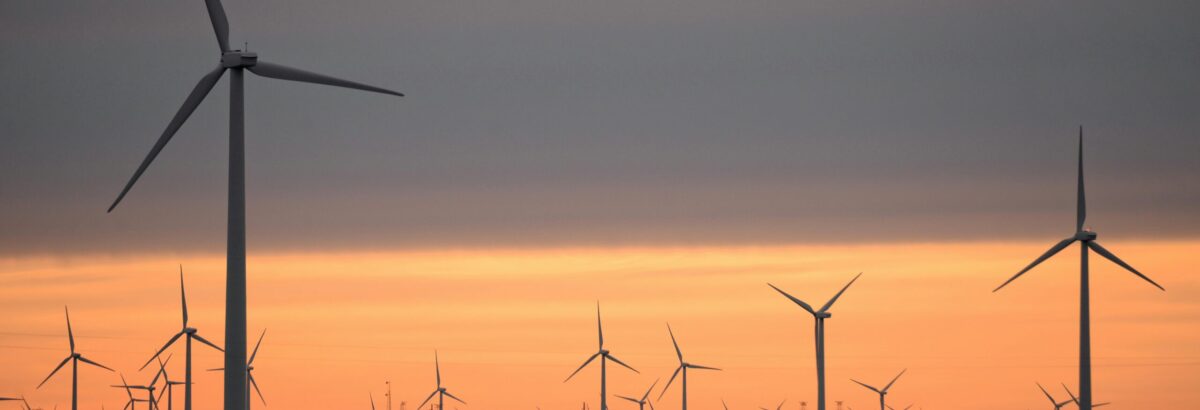28 Oct Remote Connectivity in Wind Farms
How Remote Connectivity Solutions Power Efficiency in Wind Farms
It’s important to note that Wind energy is driving the global shift toward renewable energy, and with wind farms expanding into more remote and offshore locations, having a reliable connectivity solution has never been more crucial. These connections are the lifeline keeping turbines running, enhancing safety, and boosting wind farms’ efficiency and profitability.
Let’s dive into how remote connectivity in wind farms and their operations is vital and how XCommNet’s innovative blend of LTE, 5G, and satellite technology is transforming the industry.
The Challenges of Operating Remote Wind Farms
Running a wind farm isn’t as simple as setting up turbines and letting the wind do it. Behind the scenes, there are complex challenges that require careful handling, such as:
- Real-time Monitoring: Keeping tabs on turbine performance, weather, and energy output.
- Predictive Maintenance: Spotting potential issues before they cause a breakdown.
- Data Analysis: Crunching huge amounts of data to fine-tune operations.
- Safety Protocols: Ensuring the safety of on-site staff.
To tackle these tasks, a fast and reliable communication network is essential, but traditional methods often fall short, especially in remote or offshore areas.
Real-time Data Transmission
A dependable remote connection allows data to flow seamlessly between turbines and control centres.
Pros:
- Quick identification of issues, reducing downtime.
- Data analytics in real-time to fine-tune operations.
Cons:
- Heavy data loads can strain bandwidth.
- Latency can delay real-time monitoring.
(SEO: real-time data transmission, data analytics, reduce wind farm downtime)
Predictive
Maintenance
With advanced connectivity, wind farms can use predictive algorithms to prevent equipment failure.
Pros:
- Save on costly repairs and maintenance.
- Extend the life of your equipment by catching issues early.
Cons:
- Complex software and skilled personnel are needed.
- Securing data from cyber threats becomes a priority.
(SEO: predictive maintenance for wind farms, equipment lifespan)
Remote Control and Automation
Operators can adjust settings from afar, removing the need for frequent site visits, saving time.
Pros:
- Reduce the amount of costly trips to remote sites.
- Improved safety by minimising risky manual interventions.
Cons:
- If the connection drops, operations could stall.
- Software glitches might cause hiccups in the system.
(SEO: remote control of wind turbines, wind farm automation)
The Challenges of Operating Remote Wind Farms
LTE and 5G networks have transformed remote wind farm operations by enabling high-speed data transfer and low latency, making quick and responsive control possible. While LTE provides broad coverage, 5G offers lightning-fast speeds in areas where it’s available. However, the reach of 5G infrastructure remains limited in some remote locations, and signal interference from obstacles or adverse weather can also impact performance.
Furthermore, satellite connectivity plays a crucial role where terrestrial networks can’t reach, providing reliable coverage even in the most remote offshore areas. Unlike land-based networks, satellite connections aren’t affected by local infrastructure challenges. However, they typically come with higher latency, which can slow down real-time monitoring, and tend to be more costly than traditional networks.
Combining LTE, 5G, and satellite technologies allows wind farms to mitigate individual limitations and maintain strong connectivity. A multi-layered approach provides redundancy, reducing disruptions by automatically switching to the best available network. This combination, however, requires careful coordination to integrate and manage multiple systems, and balancing the associated costs can be a challenge.
In addition to combining satellite technologies, increased connectivity in wind farms also brings security considerations. Advanced measures like encryption help keep data safe, but there’s still a risk that breaches could compromise data or disrupt operations. Navigating strict industry regulations further complicates these security measures, making reliable, secure transmission essential to effective wind farm connectivity.
XCommNet: Your Connectivity Partner
Navigating the complex landscape of remote wind farm connectivity requires expertise, and XCommNet excels at combining LTE, 5G, and satellite technologies to create tailored, reliable networks and remote connectivity in wind farms that can be depended on.
Why Choose XCommNet?
Customised Solutions: We assess your needs and tailor the best configuration for your farm.
Reliability: With our multi-layered approach, your connection remains stable, even in the harshest conditions.
End-to-End Support: From setup to ongoing support, we ensure smooth operations.
The Future of Wind Farm Connectivity
As technology evolves, remote connectivity in wind farms is set to become even more efficient. Edge computing will allow data to be processed closer to the turbines, reducing latency and bandwidth usage. IoT integration will improve data collection and control, while AI and machine learning will employ advanced algorithms to predict maintenance needs and optimise performance. By embracing these innovations, wind farms can reach new levels of efficiency and reliability.
Conclusion
Ultimately, to maximise wind farm efficiency, reliable remote connectivity is essential. XCommNet’s cutting-edge approach, combining LTE, 5G, and satellite technologies, ensures seamless operations no matter where your turbines are located. Reach out to XCommNet and discover how our connectivity solutions can make all the difference.




